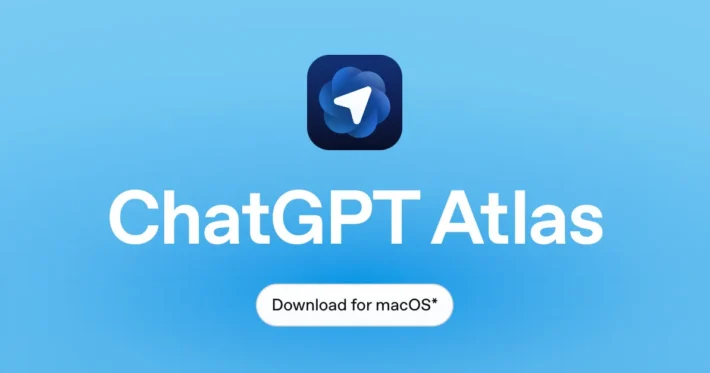Making AI Content Undetectable: Advanced Strategies for 2025

In today’s digital landscape, AI-generated content has become increasingly sophisticated, yet the need to create text that appears authentically human remains crucial for many professionals. This comprehensive guide explores cutting-edge techniques to help your AI-generated content bypass detection systems while maintaining ethical boundaries.
Why Is AI-Generated Content Detectable in the First Place?
To understand how to move beyond the typical markers of AI, one must first understand what those markers are. AI detection tools don’t “read” for meaning in the human sense; they are sophisticated pattern-recognition systems trained on vast datasets of both human and machine writing. They hunt for statistical anomalies and predictable structures that betray the non-human origin of the text.
What Is the “Statistical Ghost” in the Machine?
The core of most AI detection algorithms lies in two key concepts: perplexity and burstiness.
Perplexity: This measures how surprised or unpredictable a language model finds a sequence of words. Human writing is naturally chaotic and creative. We use unexpected turns of phrase, idiosyncratic vocabulary, and occasionally convoluted sentence structures. This results in high perplexity—the text is not easily predictable. In contrast, LLMs, by their very nature, are designed to select the most statistically probable next word. This process, while creating smooth and readable prose, results in text with very low perplexity. An AI detector sees this uniform predictability as a strong signal of machine generation.
Burstiness: This refers to the rhythm and flow of sentence length. Human writers tend to vary their sentence structures, mixing long, complex sentences with short, punchy ones. This variation creates a “bursty” rhythm. Early and even some contemporary AI models often produce text with unnervingly consistent sentence lengths, lacking the natural cadence of human expression. A paragraph where every sentence is between 15 and 20 words long is a classic tell.
Does AI Lack a Genuine “Voice”?
Beyond pure statistics, AI-generated text often lacks the subtle imperfections and rich texture of human writing. Human authors bring a lifetime of lived experiences, sensory details, and emotional context to their work, which manifests in several ways:
Lack of True Anecdote: While an AI can invent a plausible-sounding story, it struggles to imbue it with the authentic, often messy, details of a real personal experience. Human anecdotes have a specificity and emotional resonance that is difficult to fabricate.
Idiosyncratic Phrasing: Every person has unique verbal tics, favorite metaphors, or ways of structuring an argument. These are often inconsistent and not always grammatically perfect, but they form a cohesive personal style.
Embodied Perspective: A human writing about the ocean might subtly weave in the smell of salt, the feeling of sand, or the sound of gulls—sensory details grounded in physical experience. An AI can describe these things based on its training data, but it cannot evoke them from a place of genuine memory, leading to descriptions that feel generic or hollow.
What Strategies Actually Work for Creating Undetectable AI Content?
The Human-in-the-Loop Approach
The most effective approach combines AI generation with human modification. This isn’t simply about making superficial changes but integrating your unique perspective throughout the content.
- Use AI as a first-draft tool only– Begin with a detailed prompt that reflects your thinking
- Treat the AI output as raw material, not finished content
- Identify sections that sound too perfect or formulaic
- Apply authentic human touches– Insert personal anecdotes that only you would know
- Add industry-specific insights from your experience
- Introduce occasional deliberate imperfections (natural human writing contains them)
- Restructure with intention
- Move paragraphs to create a less predictable flow- Break up consistently sized paragraphs
- Create sentence length variety that matches your natural style
How Can Prompting Techniques Improve Undetectability?
The way you interact with AI significantly impacts how detectable the output will be. Advanced prompting techniques include:
Character-based prompting– Instead of asking for “undetectable content,” instruct the AI to write as a specific character with distinctive traits
Example: “Write as a veteran journalist with 30years of experience covering technology who tends to use metaphors and occasionally includes mild sarcasm”
Multi-step transformation
- Generate content about Topic A
- Ask the AI to transform it into content about Topic B while preserving style and structure
- This creates less predictable patterns than direct generation
Style-blending technique
- Provide samples of your own writing
- Ask the AI to analyze your style patterns
- Request content that incorporates your stylistic elements
Which Post-Processing Methods Are Most Effective?
After generating AI content, these post-processing approaches can significantly reduce detectability:
Semantic restructuring
- Identify key ideas but express them in completely different words
- Rearrange the logical flow of arguments
- Combine or split paragraphs in unexpected ways
Vocabulary personalization
- Replace common AI terms with your industry’s jargon or personal preferences
- Introduce occasional slang or colloquialisms that fit your voice
- Add regional expressions if appropriate to your background
Rhythm variation
- Alternate between short, punchy sentences and longer, more complex ones- Include occasional fragments or run-ons (as humans naturally do)
- Vary paragraph length significantly
What Are the Ethical Boundaries When Making AI Content Undetectable?
While these techniques can help create content that bypasses detection, it’s essential to establish clear ethical guidelines:
When Is Making Content Undetectable Appropriate?
Making AI-generated content undetectable can be ethically justified in several contexts:
- When using AI as a writing assistant rather than a replacement
- For overcoming language barriers while expressing your own ideas
- When developing creative content that you substantially modify
- In situations where AI detection might create unfair bias
Where Should We Draw the Line?
Certain applications of undetectable AI content cross ethical boundaries:
- Academic submissions without proper disclosure
- Creating misleading information or deepfakes
- Impersonating real individuals without permission
- Bypassing content moderation systems
- Mass-producing content without human oversight
The key ethical principle is transparency with your audience about the role AI played in content creation, even if the specific content isn’t flagged by detection systems.
Will Perfect Undetectability Remain Possible?
The consensus among AI researchers suggests that perfect undetectability will become increasingly difficult as detection systems grow more sophisticated. However, the distinction between “AI-assisted” and “AI-generated” content will likely blur as these tools become more integrated into standard writing workflows.
The most sustainable approach is not to focus on evading detection entirely but rather on developing a collaborative relationship with AI tools that enhances your natural voice rather than replacing it.
Getting Started
CometAPI is a unified API platform that aggregates over 500 AI models from leading providers—such as OpenAI’s GPT series, Google’s Gemini, Anthropic’s Claude, Midjourney, Suno, and more—into a single, developer-friendly interface. By offering consistent authentication, request formatting, and response handling, CometAPI dramatically simplifies the integration of AI capabilities into your applications. Whether you’re building chatbots, image generators, music composers, or data‐driven analytics pipelines, CometAPI lets you iterate faster, control costs, and remain vendor-agnostic—all while tapping into the latest breakthroughs across the AI ecosystem.
While waiting, Developers can access Gemini series (such as Gemini 2.5 Pro Preview API) ,Claude Series Models(such as Claude Opus 4 API) and Openai Series Models (such as GPT-4.5 API etc) through CometAPI, the latest models listed are as of the article’s publication date. To begin, explore the model’s capabilities in the Playground and consult the API guide for detailed instructions. Before accessing, please make sure you have logged in to CometAPI and obtained the API key. CometAPI offer a price far lower than the official price to help you integrate.
Conclusion
Creating undetectable AI content in 2025 requires a thoughtful combination of technical understanding, strategic prompting, and significant human modification. The most effective approach treats AI as a sophisticated writing partner rather than a replacement for human creativity.
As detection technology continues to evolve, the focus should shift from evading detection to developing workflows that genuinely combine the efficiency of AI with the authenticity and insight that only human experience can provide. This balanced approach not only helps avoid detection but also results in higher-quality content that genuinely provides value to your audience.
By maintaining ethical boundaries and focusing on enhancing rather than replacing your voice, you can leverage AI tools effectively while preserving the authentic human connection that remains at the heart of meaningful communication.



